The Brides of Dracula (1960)
Marianne Danielle (Yvonne Monlaur), a young French schoolteacher en route to take up a position in Transylvania at an all-girls school, is lured to Castle Meinster where the Countess tells Marianna (Martita Hunt) about her insane son (David Peel) that she keeps locked up. Of course the son is a vampire and the Countess has been luring single women to the castle to feed her evil spawn, but unfortunately for the Countess the school teacher frees the dude who then quickly "murders" his mom. Lucky for all concerned that the local priest had called for the renowned vampire hunter Van Helsing (Peter Cushing) to investigate these evil shenanigans.This was sequel to Hammer Film's Dracula but as Christopher Lee turned it down we got stuck with lite weight David Peel whose bloodshot contact lenses and goofy vampire teeth do not help in turning him into a threatening image.
• Marianne is not so much naive as she is rock stupid. After escaping the house, where her last image was of a cackling mad housekeeper and the dead Countess, she agrees to marry the Baron as if nothing had ever happened.
• Van Helsing is pretty inept in this outing. He only ever brings one cross with him, which he constantly loses, and this is not helped by the fact that he's always bloody late to stop a rising vampire.
• Van Helsing stakes the vampire turned Countess about two inches below where he heart would be.
• The realistic model bat created for the movie was lost so we are subjected to one that would have fit better in an episode of The Munsters.
• Van Helsing loses both fights he had with the Baron and even gets bitten. Why the vampire didn't drain him is bizarre and we must assume was because the idiot wanted to taunt the good doctor with his new bride, but this of course allows Van Helsing time to cauterize the bite with a hot poker and some holy water. This is a pretty badass moment but I don't quite understand why the holy water healed the bites as well as the burns.
• The vampire is defeated when Van Helsing turns the blades of windmill so that they throw the shadow of a cross onto the Baron. I'll admit that is pretty cool.
This is definitely not one of the better Hammer Dracula films but it's always a delight to watch Peter Cushing at work and like most of these movies it is beautifully shot
The Curse of the Werewolf (1961)
I'm a fan of the werewolf subgenre of horror films and this one is certainly unique as it has the most unusual origin story for the werewolf that I've ever seen. A beggar (Richard Woodsworth) knocks on the door of the home of the cruel Marquis Siniestro (Anthony Dawson) on the day of the marquis's wedding, the sadistic marquis makes the beggar dance for his food and then has the fellow imprisoned for supposed "lude remarks" about the bride (Josephine Llewellyn). The beggar is basically forgotten by all and his only sole human contact is the mute severing girl (Yvonne Romain) who brings food to his cell. One night the aged and decrepit marquis makes advances on the poor mute girl and when she rebuffs him he has her thrown into the same prison that the old beggar still occupies. Unfortunately by this point the beggar has become more animal than man and he savagely rapes the girl.It's at this point one must wonder "Am I watching a werewolf film?" You will go on wondering for a while longer as the girl survives the rape, murders the marquis, and flees into the woods where she is eventually found by a kindly gentleman-scholar (Ewen Solon) who takes her in. The housekeeper soon discovers the girl is pregnant and nine months later on Christmas Day little baby Leon is born.
Still no werewolves in sight.
The little boy grows up and after tasting the blood of a squirrel shot by the local hunter he starts having nightmares, and also the village’s goats and family pets start turning up savagely killed. Could this be the acts of a werewolf?
The village priest (John Gabriel) informs the scholar that only love can keep the beast contained and for a while this seems to be the case. A father's love for his adopted son seems to be the saving grace here but once Leon becomes a man and leaves home there is no nearby love to shield him from the full moon.
Oliver Reed plays adult Leon but he appears at about the hour mark in what is roughly a ninety minute movie, the werewolf make-up is pretty good and was certainly inspired by Jack Pierce's Wolfman make up, but we don't get any real good transformation scenes and the attacks mostly happen in shadow or we just see some furry hands.
The Curse of the Werewolf is Oliver Reed's first credit screen role and he is quite good as the tortured man begging to be murdered for the things he's done, and damn he was one handsome looking dude back in the day.
This may not be the best example of a werewolf film but its bizarre origin story and excellent cast make this one worth checking out.
Note: The beggar was supposed to have been a werewolf but the censor had problems with the notion of a werewolf/rapist so that idea was jettisoned. Censorship is just bizarre.
Captain Clegg (1962)
Also known as Night Creatures this Hammer film features Peter Cushing as a village parson who along with the squire's son Harry (Oliver Reed) runs a smuggling operation that moves alcohol from France to England without paying duty or taxes. They use the legend of the "Marsh Phantoms" as a nice smokescreen, think of your typical Scooby-Doo scam, but things start to unravel when a regiment of the King's men arrive to investigate rumors of this smuggling operation.This is a great little mystery with Peter Cushing's brilliant parson Dr Blyss at the center of things, who is a man with a mysterious path, and Oliver Reed is once again a striking leading man who will do anything to win the hand of the woman he loves.
Unlike many Hammer films this one has no real supernatural menace but instead is simply a taught and well-acted period drama and well worth checking out.
The Phantom of the Opera (1962)
In 1962 Hammer Films decided to take a crack at the Gaston Leroux classic with actor Herbert Lom as the title character after Cary Grant backed out of the project. That the script was written for Grant in mind is film's biggest problem as it completely removed the Phantom as being any kind of threat.• For some reason the Phantom has an Igor like henchman (Ian Wilson) that does all the killing, and not even killings directed by the Phantom but just random ones because the little hunchback is nuts.
• The Phantom has the hunchback kidnap Christine (Heather Sears) so he can give her singing lessons, and the Phantom slaps Christine and throws water in her face whenever she gets tired, and this tosses out any sympathy the film may try to develop for the character.
• The Phantom's mask looks like a kid's paper mache project that got left out in the rain.
• Like the 1943 version from Universal the Phantom is given a tragic backstory where his music was being stolen from him and while trying to get it back he is horrible disfigured.
• When the hero (Edward de Souza) tracks down the Phantom in his subterranean lair the confrontation is basically the Phantom telling his backstory and falling to his knees and begging for the chance to continue to teach Christine. Both the hero and Christine are surprisingly cool with that idea.
• The classic moment of the chandelier falling is now at the end of the movie and is accidentally caused by the hunchback; as the chandelier plummets towards Christine, and not the audience over which such a chandelier would be located, the Phantom must swing down to knock her out of the way and thus it is he who is hit by the chandelier and dies.
This version has a really pathetic Phantom who does almost nothing to drive the plot forward, if it wasn't for Michael Gough as the casting couch villain the movie would barely have any conflict at all, and both the hero and the heroine are rather bland. This is a version to miss.
Paranoiac (1963)
The wealthy Ashby family has had a bit of a rough go over the years, the parents died in a plane crash and the oldest son, Anthony, committed suicide by jumping off a cliff into the sea when he was 15. The second son, Simon (Oliver Reed) is now a sadistic, spendthrift alcoholic who trying to drive his sister Eleanor (Janette Scott) insane. A wrinkle develops when a young man arrives one day claiming to be the long lost and presumed dead Anthony (Alexander Davion).• Is poor Eleanor actually insane?
• What exactly is Aunt Harriet (Sheila Burrell) covering up?
• What of the embezzling son (Maurice Denham) of the family attorney?
• Who is that masked creature that Simon plays his music for?
• And is that young man the real Anthony?
As a twisted mystery Paranoiac has a lot going for it as the cast is spectacular, Oliver Reed is the standout here as the cruel brother with a dark secret, and the final showdown brings a nice ending to the proceedings. Well worth checking out.
The Kiss of the Vampire (1963)
Honeymoon couple Gerald (Edward de Souza) and Marianne Harcourt (Jennifer Daniel) run out of petrol while driving through the Bavarian countryside and our forced to stay at a local inn until some gas can be sent for. The two are invited to dine with the local bigwig Dr. Ravna (Noel Willman) and they are both charmed by him and his two adult children.The minute the couple ran out of gas you knew trouble was in the offing and then when they stay at the inn where no one stays, that is except drunken Professor Zimmer (Clifford Evans) who has his own agenda, well it all goes downhill from there. Turns out Dr. Ravna is the head of some kind of vampire cult and they have their sites set on Marianne joining their little family.
• Great use of a masquerade party to separate the lovebirds.
• Dr. Ravna and is his son Carl (Barry Warren) are both creepily seductive.
• Marianne looks incredible in that red gown.
• First time seeing the "Van Helsing" type character use black magic to take on vampires.
• As fake as the horde of vampire bats looked the attack scene was very effective.
Nightmare (1964)
Janet (Jennie Linden) a girl at finishing school has been plagued by nightmares ever since she was eleven years old and walked in on her mother murdering her father, now she is terrified that she's going mad and will end up in the same asylum as her mother. When she visits home midterm she starts to envision a woman standing over her bed, a white-shrouded woman who roams the corridors and when tracked down by Janet is repeatedly found stabbed to death.Turns out Janet is being gaslighted her guardian Henry Baxter (David Knight) and her supposed nurse Grace Maddox (Moira Redmond) that Baxter hired to look after her. It's the nurse dressed in white and this was all orchestrated so that when Baxter's wife visited Janet would mistake her for the woman in white and stab her thus freeing Baxter to marry Grace and get his wife's money. The plan works beautifully, and poor Janet is bundled off to the asylum, but things don't go all that well for Grace who shortly after marrying Henry starts to suspect that he is trying to driver her crazy as well.
This is one of those great psychological thrillers that keep you at the edge of your seat, beautifully shot in black and white and artfully directed by Freddie Francis.
The Evil of Frankenstein (1964)
"Why can't they ever leave me alone?" is the lament of Baron Frankenstein (Peter Cushing) after being chased out of another town for body snatching and practicing mad science. Now in need of money to further his experiments the Baron and his partner Hans (Sandor Elès) are forced to return to the Baron's hometown of Karlstaad in the hopes of selling off some of his family treasures. Unfortunately the corrupt Burgomeister (David Hutcheson) had "confiscated" anything of value and the Baron and Hans are once again chased into the hills.Lucky for them they run into a deaf-mute beggar girl (Katy Wild) who leads them to cave where they find the original monster trapped in a glacier. The Baron is able to revive the monster's body (Kiwi Kingston) but not his mind so he resorts to getting the aid of a carnival hypnotist to awaken the creature's mind. This does not work as well as he had hoped.
• The make-up for the monster is the classic flat head and moon boots version from Jack Pierce's Universal monster that Boris Karloff made famous but with the addition of what looks like grey oatmeal plastered over the face.
• The red headed deaf-mute girl helps them because the Baron and Hans didn't run her over. That girl has some serious inferiority issues.
• In the movies all hypnotists are evil.
• The Monster is not defeated by an angry mob this time but instead by a drunken bender.
Though Peter Cushing is back the film breaks continuity with the previous entry as we get a flashback origin story that does not match the last Hammer Frankenstein film. Though considered the worst of the Frankenstein series it does have some interesting ideas, and the film is well shot and acted, but the Monster will certainly never be comparable to the Karloff version.
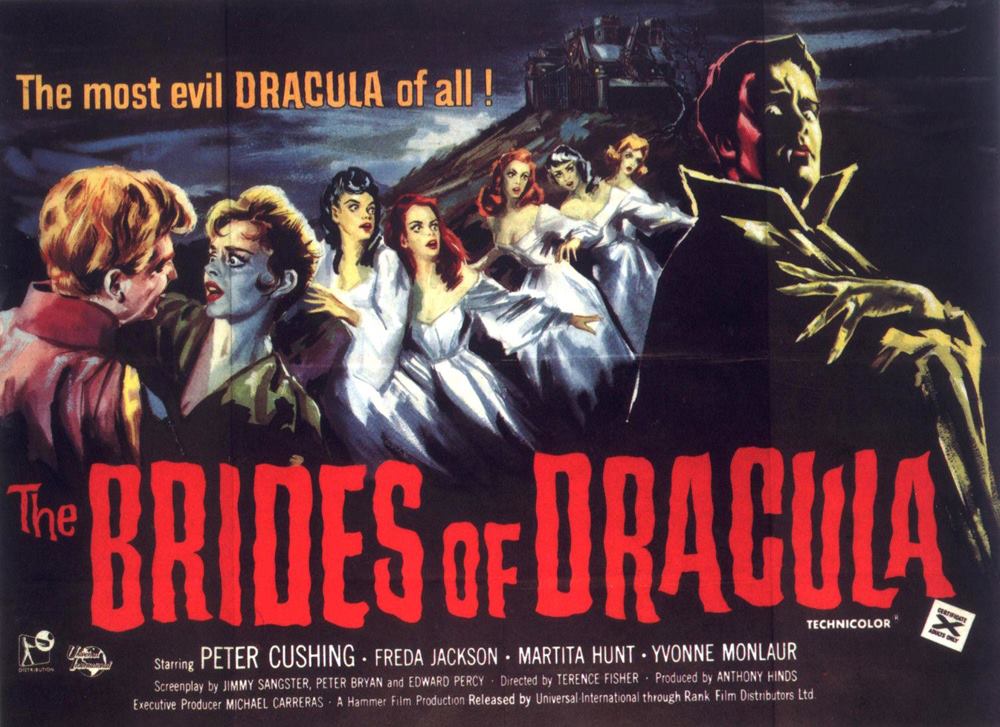
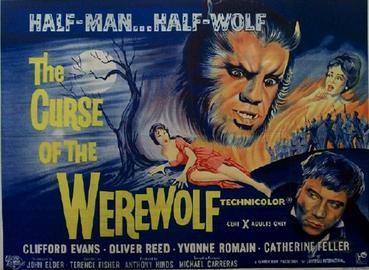
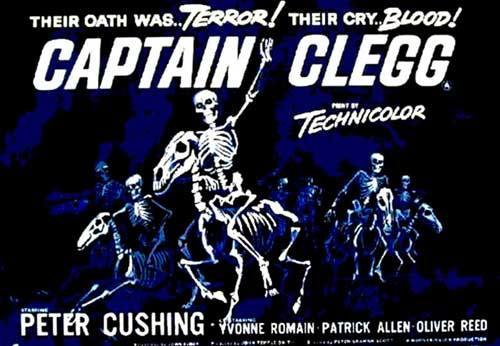
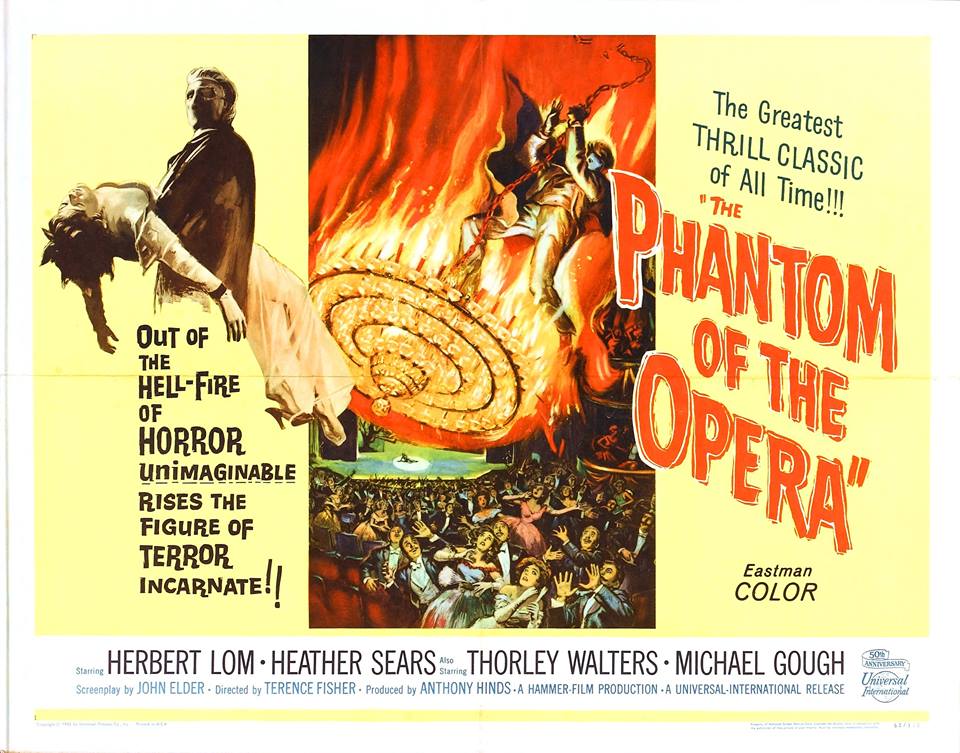
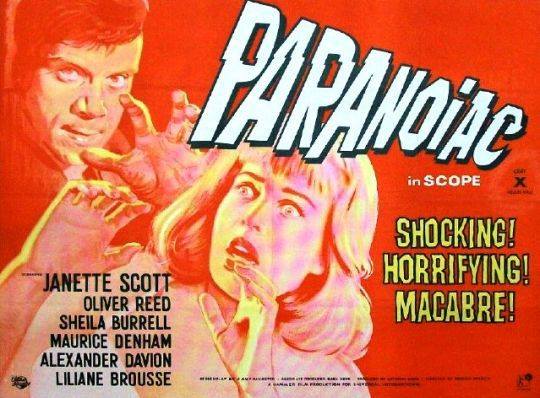
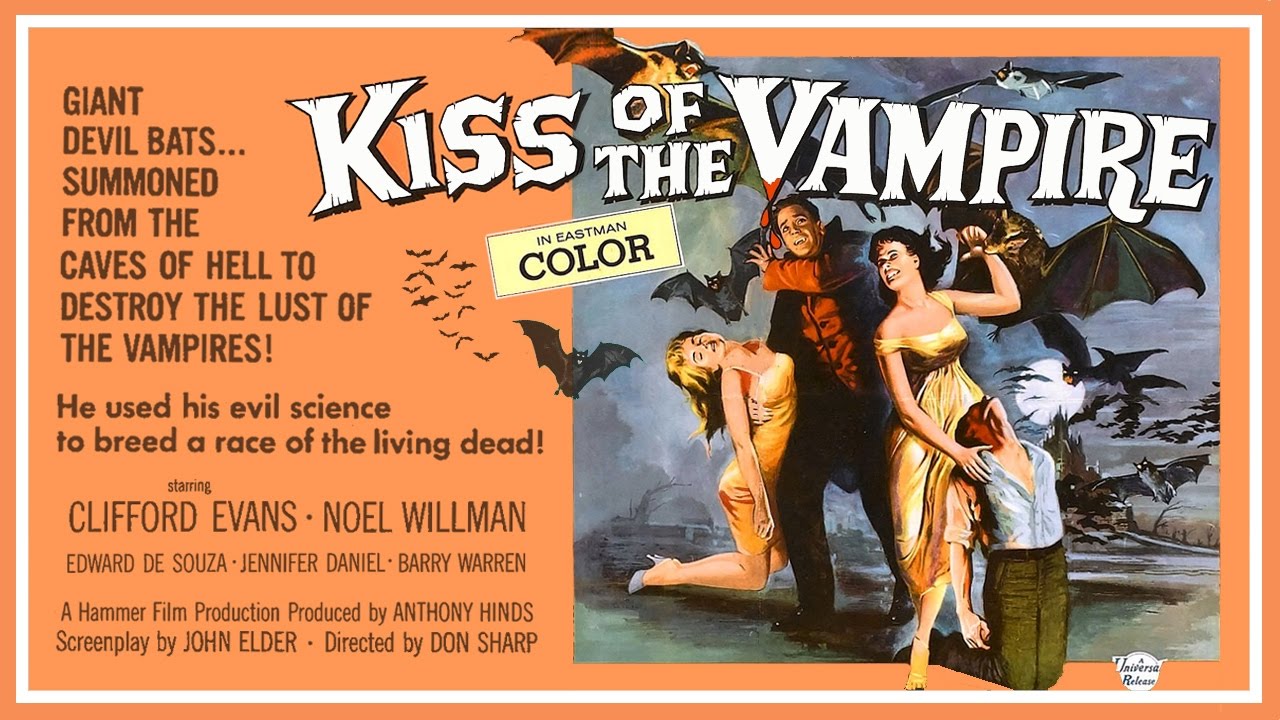



No comments:
Post a Comment